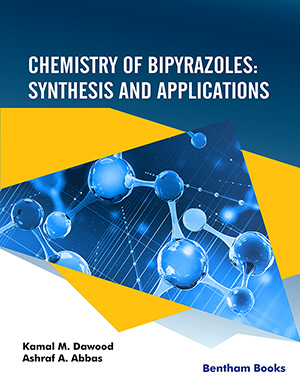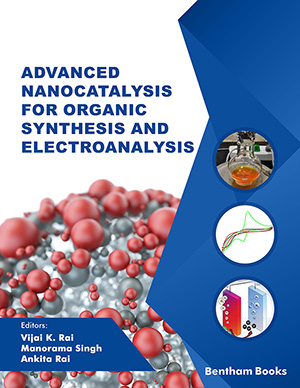
Abstract
Polyether antibiotics (ionophores) represent a large group of lipophilic compounds which are able to form complexes with the metal cations and transport them across the lipid membranes. This process disturbs the intercellular Na+/K+ concentration gradient and intracellular pH and leads to the mitochondrial injuries, cell swelling, vacuolization and finally to apoptosis process. For this reason, ionophores are commonly used in veterinary medicine as the non-hormonal growth-promoting and coccidiostatic agents. In this group, particularly interesting are monensin and salinomycin because of their proved anti-tumour activity, including efficiency against multidrug-resistant cancer cells and cancer stem cells. Prompted by the idea that cancer cells may be individually effectively killed by these compounds, a very interesting direction of research is bioconjugation process of ionophores. This review is focused on the possible role of hybrids of ionophore antibiotics with other biologically active substances in anti-cancer and anti-bacterial treatment and gives an overview of their properties.
Keywords: Ionophore antibiotics, monensin, salinomycin, bioconjugation, hybrid compounds, anticancer activity, antibacterial activity.
Mini-Reviews in Organic Chemistry
Title:Bioconjugation of Ionophore Antibiotics: A Way to Obtain Hybrids with Potent Biological Activity
Volume: 14 Issue: 4
Author(s): Michal Antoszczak*Adam Huczyński
Affiliation:
- Department of Bioorganic Chemistry, Faculty of Chemistry, Adam Mickiewicz University, Umultowska 89b, 61-614 Poznań,Poland
Keywords: Ionophore antibiotics, monensin, salinomycin, bioconjugation, hybrid compounds, anticancer activity, antibacterial activity.
Abstract: Polyether antibiotics (ionophores) represent a large group of lipophilic compounds which are able to form complexes with the metal cations and transport them across the lipid membranes. This process disturbs the intercellular Na+/K+ concentration gradient and intracellular pH and leads to the mitochondrial injuries, cell swelling, vacuolization and finally to apoptosis process. For this reason, ionophores are commonly used in veterinary medicine as the non-hormonal growth-promoting and coccidiostatic agents. In this group, particularly interesting are monensin and salinomycin because of their proved anti-tumour activity, including efficiency against multidrug-resistant cancer cells and cancer stem cells. Prompted by the idea that cancer cells may be individually effectively killed by these compounds, a very interesting direction of research is bioconjugation process of ionophores. This review is focused on the possible role of hybrids of ionophore antibiotics with other biologically active substances in anti-cancer and anti-bacterial treatment and gives an overview of their properties.
Export Options
About this article
Cite this article as:
Antoszczak Michal*, Huczyński Adam, Bioconjugation of Ionophore Antibiotics: A Way to Obtain Hybrids with Potent Biological Activity, Mini-Reviews in Organic Chemistry 2017; 14 (4) . https://dx.doi.org/10.2174/1570193X14666170518112608
| DOI https://dx.doi.org/10.2174/1570193X14666170518112608 |
Print ISSN 1570-193X |
| Publisher Name Bentham Science Publisher |
Online ISSN 1875-6298 |
Call for Papers in Thematic Issues
Active Alkaloids: Structure, Mechanism of Action, Chemical Synthesis, and Biosynthesis
The scope of this topic encompasses the structure, mechanism of action, chemical synthesis, and biosynthesis of active alkaloids. Alkaloids, a class of nitrogen-containing organic compounds with alkaline properties, originate from a diverse array of sources. Many alkaloids exhibit significant biological activities and serve as key constituents in numerous medicinal plants. ...read more
Advancement in Petroleum Geochemistry
The scope of the thematic issue on advancements in petroleum geochemistry encompasses a broad range of cutting-edge research and technological innovations. This issue aims to highlight the latest developments in understanding the chemical and physical properties of petroleum and its geological formations. Key areas of focus include: Unconventional Resources: Exploring ...read more
Advancements in Synthesis of Bioactive Compounds
This thematic issue focuses on elucidating advanced synthetic strategies for bioactive compounds, with the primary objective of deepening understanding of the rational design and construction of target molecules. The exploration encompasses a diverse range of techniques, established name reactions, and cutting-edge synthetic methodologies. Specifically, the issue delves into the synthesis ...read more
Advances in Sustainable Synthesis and Applications of Cyclic Carbonates: From Green Chemistry to Advanced Materials
Cyclic carbonates have become a focus of attention because of their potential in sustainable chemistry, energy solutions, and advanced materials. Recent breakthroughs in their synthesis emphasize the use of CO₂ as a renewable feedstock, which is a step toward reducing carbon emissions. New catalytic processes, including both traditional metal catalysts ...read more
Related Journals
 48
48 1
1
- Author Guidelines
- Graphical Abstracts
- Fabricating and Stating False Information
- Research Misconduct
- Post Publication Discussions and Corrections
- Publishing Ethics and Rectitude
- Increase Visibility of Your Article
- Archiving Policies
- Peer Review Workflow
- Order Your Article Before Print
- Promote Your Article
- Manuscript Transfer Facility
- Editorial Policies
- Allegations from Whistleblowers
Related Articles
-
Clinical Considerations of Focal Drug Delivery in Cancer Treatment
Current Drug Delivery The Phosphoinositide 3-Kinase Pathway in Human Cancer: Genetic Alterations and Therapeutic Implications
Current Genomics The Impediments of Cancer Stem Cells and An Exploration into the Nanomedical Solutions for Glioblastoma
Anti-Cancer Agents in Medicinal Chemistry P38 MAPK Contributes to Resistance and Invasiveness of HER2- Overexpressing Breast Cancer
Current Medicinal Chemistry Vagotomy and Gastric Tumorigenesis
Current Neuropharmacology The Crosstalk Between the Matrix Metalloprotease System and the Chemokine Network in Acute Myeloid Leukemia
Current Medicinal Chemistry Exosomal microRNAs as Potentially Useful Tools in Cancer Biomarker Discovery
Recent Patents on Biomarkers Pioglitazone Prevents Smoking Carcinogen-Induced Lung Tumor Development in Mice
Current Cancer Drug Targets Vascular Endothelial Growth Factor as an Anti-Angiogenic Target for Cancer Therapy
Current Drug Targets Clinical Pharmacokinetics of Irinotecan-Based Chemotherapy in Colorectal Cancer Patients
Current Clinical Pharmacology Multi Fractal Process of Powder Particle Breakage and Aggregation
Current Nanoscience Hypoxia and Inflammation in Prostate Cancer Progression. Cross-talk with Androgen and Estrogen Receptors and Cancer Stem Cells
Endocrine, Metabolic & Immune Disorders - Drug Targets Manipulation of Intracellular pH in Cancer Cells by NHE1 Inhibitors
Protein & Peptide Letters Integrin-Targeted Peptide- and Peptidomimetic-Drug Conjugates for the Treatment of Tumors
Recent Patents on Anti-Cancer Drug Discovery Structure, Gating and Basic Functions of the Ca2+-activated K Channel of Intermediate Conductance
Current Neuropharmacology The Use of Cytokines and Chemokines in the Cancer Immunotherapy
Recent Patents on Anti-Cancer Drug Discovery Sirtuin Inhibitors: An Overview from Medicinal Chemistry Perspective
Anti-Cancer Agents in Medicinal Chemistry From Peptides to Small Molecules: An Intriguing but Intricated Way to New Drugs
Current Medicinal Chemistry Recent Development of Copolymeric Nano-Drug Delivery System for Paclitaxel
Anti-Cancer Agents in Medicinal Chemistry Autophagy Regulators as Potential Cancer Therapeutic agents: A Review
Current Topics in Medicinal Chemistry

























